In June 2023, I embarked on an expedition to Cordoba, Spain. The goal of this mission was to investigate the myriad of patterns that occur in the ancient La Mezquita mosque-cathedral. In this article, I’ll share my findings and insights of this expedition.
History of La Mezquita
The history of La Mezquita starts at an unknown date in our history. It is believed that there might have been an early Roman temple at this place and later a Visigothic Christian church. What we know for sure is that in the year 785 after Christ, the Christian church was sold to Abd al-Rahman.
Abd al-Rahman was a member of the recently overthrown Umayyad dynasty of Damascus. This rich refugee prince landed in Cordoba after a tumultuous journey and established a caliphate there. During his reign, he also commissioned the construction of the great mosque of Cordoba. Since its resurrection in 785, the building has evolved through the centuries. Most notable is the expansion made by Al-Mansur, who significantly expanded the surface area of the mosque. After this expansion, the mosque became the largest mosque in the Muslim world, outside of the Abbasid Caliphate.
In 1236 however, Cordoba was conquered by King Ferdinand III of Castile as part of the Reconquista. And thus the mosque could no longer stay a mosque. It had to become a church once again.
But instead of simply demolishing the mosque and starting a cathedral at the same place – a solution that might seem intuitive to most of us (destroying the places of worship of your enemies) – they decided to build the cathedral… inside of the mosque!
Sounds super weird, I know.
So let me try to explain to you what it feels like to witness this building.
The experience of walking in for the first time
Because I had no (audio) guide when I entered the building for the first time, I had no other option than to simply follow my intuition. To follow my sensory impulses.
I think everyone that steps foot in La Mezquita for the first time will be overcome by the same feeling. All visitors are hypnotised by the almost infinite repetitions of arches and pillars. Even though the architects tried to uphold the illusion of high ceilings by installing double arches, the room still feels slightly dense. This is mostly because of the severe lack of light, which further strengthens the feeling that you’ve lost all of your orientation skills.
It’s dark, it’s uniform, and you can’t really see the end of the building. These qualities of the mosque make it seem as if you are in the middle of a dream.
You probably know the feeling that I’m talking about.
When you are in a dream, and you recognise that the space you are in is a bit odd. There is something off about it. Not quite right. And that’s what makes you realise you are in a dream.
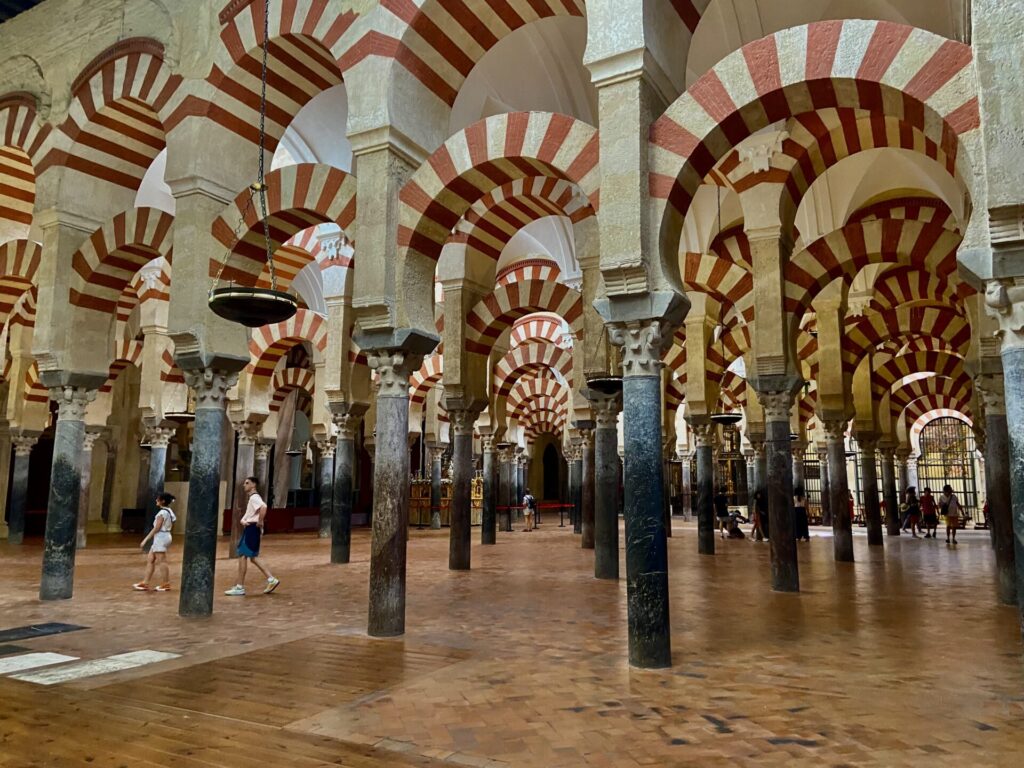
Except… this building is not a dream… it is real.
The second thing all visitors will notice is the soft beams of light that beckon you. They seem to whisper softly: ‘hey, psst, come here, there is something special that you need to see.’
And so, following the whispers of these light beams, also I was lured into the heart of the structure. This is where the cathedral is located. It’s hard to see it from the outside, or even from the inside of the mosque, but it is there. Once you’ve followed the lights into the center, you are blown away by the beauty of the cathedral.
The experience of the cathedral stands completely perpendicular to the experience of the mosque.
Where the mosque feels dense, dark, and mysterious, the cathedral is a dramatic, spacious pool of light. Abundantly, the light pours through the window of the very high walls. It’s reflected on the virginally white limestone that the church is built off and completely fills the basin of the white nave. It’s a very dramatic effect, which made me respect the Catholics even more. Unlike the Protestants, they do know how to organise a good show. The dramatic effects of the cathedral are only strengthened by the existence of the mosque around it. The stark contrast between the two parts of the building heightens each other’s experience.
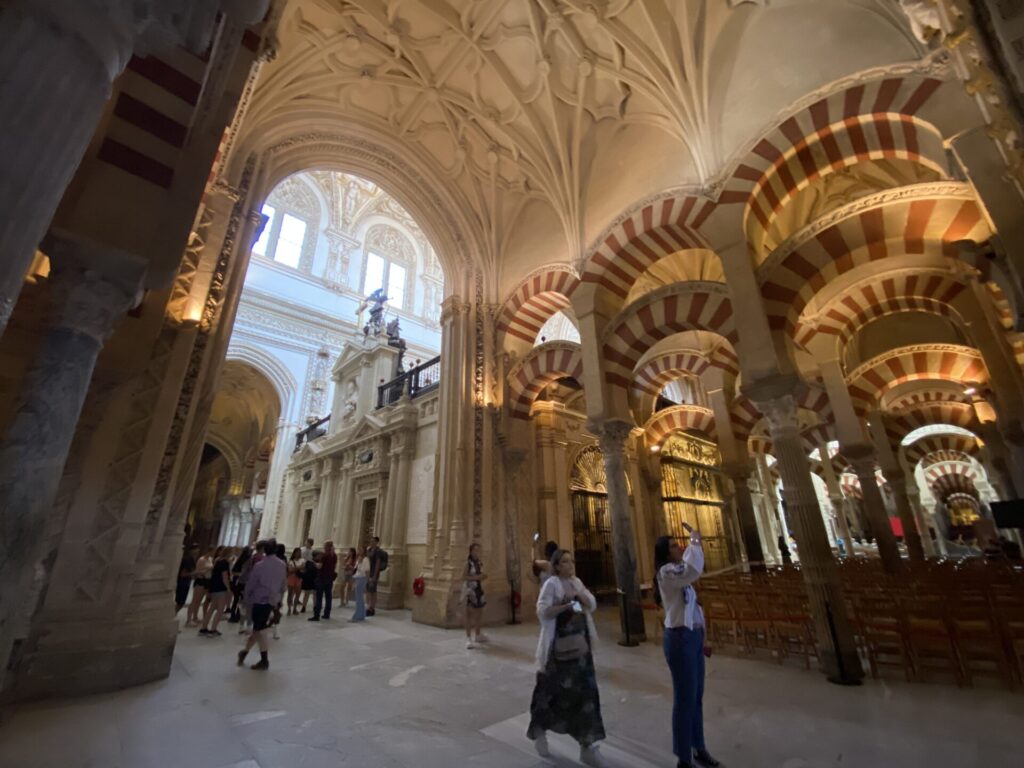
It’s difficult to translate the experience of the building into a picture, but here you can see a bit of the transition from the mosque to the cathedral. But like I said: it does not represent the feelings of actually walking there at all.
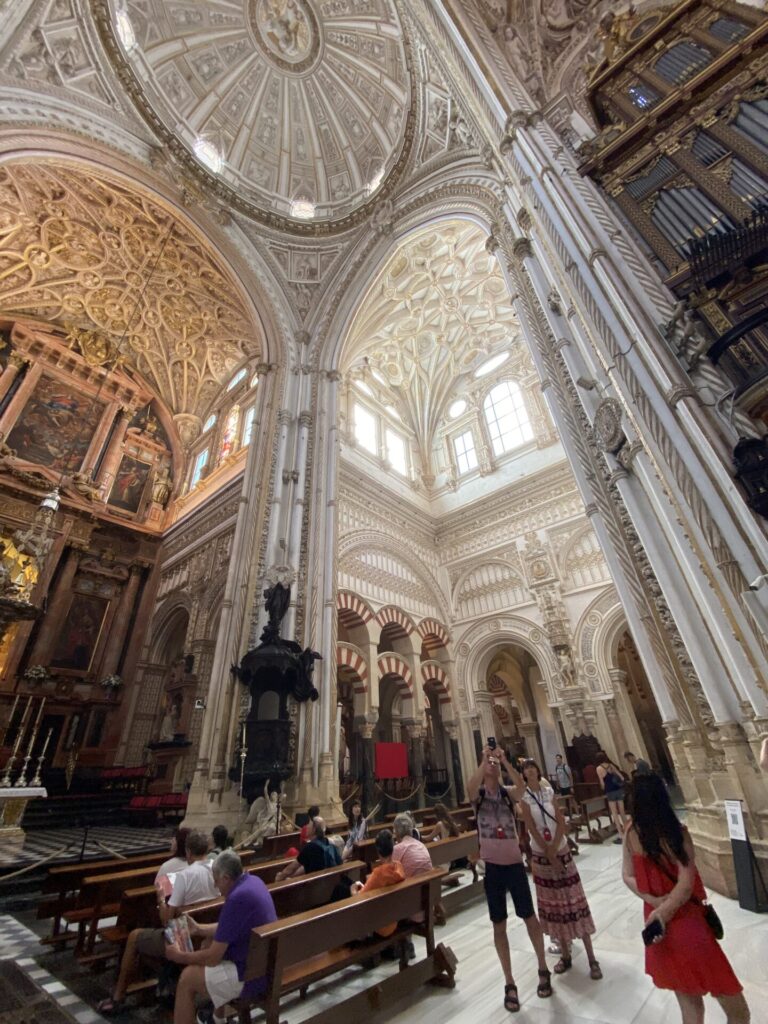
Incredible dramatic structures. A divine experience.
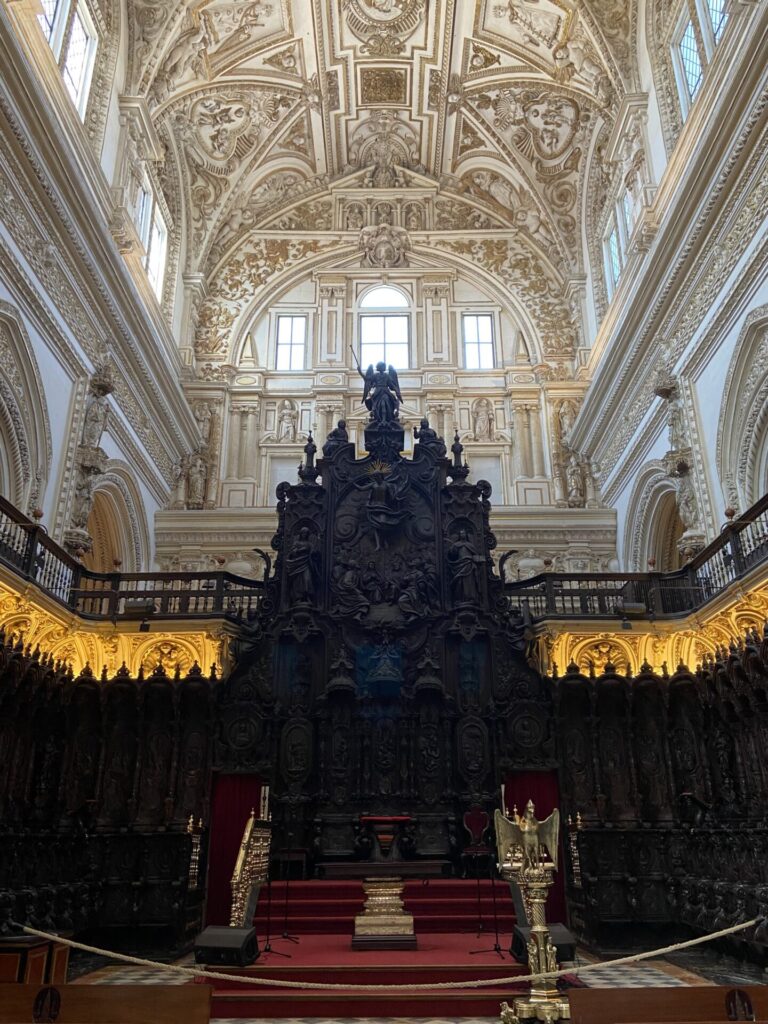
I loved how even inside the cathedral they created this super strong contrast between the white limestone and the dark mahogany wood. Very dramatic.
How facts vulgarise the sacred experience
Now I will explain to you my second tour through the building. This time, I wasn’t alone. This time, I had an audio guide to accompany me and teach me all of the interesting facts about the building’s history.
I was quite pleased that I got to experience the building twice. Once without the audio guide (just following my intuition), and once with the audio guide. Because even though it was tremendously interesting to learn all the cool facts about the building, it also took away all of the magic.
Slowly, but surely, I started to realise that this – in fact – is not a building of sacred qualities, but merely a pile of bricks that humans had thrown together.
This became especially clear to me when the audio guide instructed me to look at the horseshoe arches in the latest expansion (the Al-Mansur expansion – the one that finally made it the largest mosque in the Western Muslim world).

Take a good look at the ‘red bricks’ of these arches. Yes. You see that right. They are painted on. The goal of this massive expansion of the mosque was size, not splendour. There were more symptoms like this, that showcased the hasty work of this latest construction.
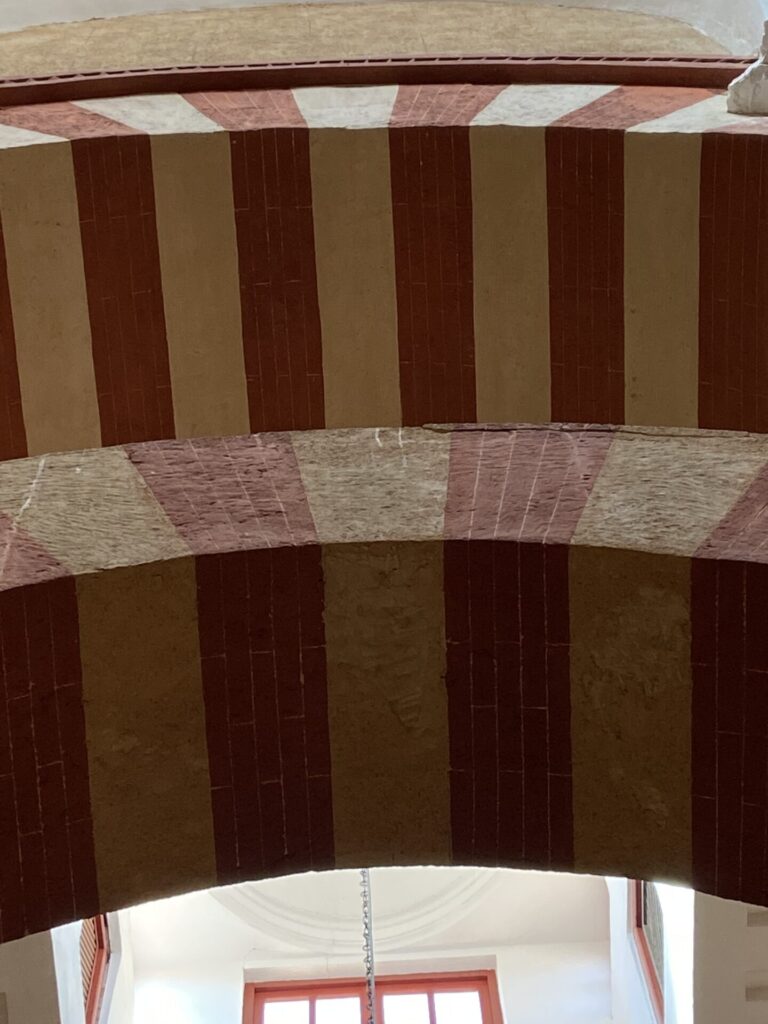
And it was this information that broke the magic for me. All of a sudden I was forced to see the building for what it really was. A bunch of bricks and mortar, piled on top of each other by simple humans. They had very vulgar, political motivations to build this building. As pious and sacred as the act of building a mosque or a cathedral might seem, most of the time it’s simply a political move. The building needs to be the biggest, brightest, most dramatic building in the world. It needs to evoke the envy of our enemies and the awe of the rabble.
Not very romantic indeed.
The cracks that let the light in
But fortunately, not all magic is lost. Because although the motivations of the kings and princes might have been vulgar, they did enable some really good craftsmen and artisans to work on their vision. The mesmerizing qualities of the mosque and the dramatic waterfall of light of the cathedral would not have been there if there were only politicians on this earth. It requires architects, masonries, and other talented artists to create and execute a vision.
Those are the cracks in the vulgar games of politics. The cracks that let the light in.
Islamic patterns and Escher’s drawings
One of the reasons why I visited La Mezquita was to follow in the footsteps of the great Dutch mathematician-artist M.C. Escher. Apparently, he was completely enthralled by the repetitive arches of the mosque. I found this great article that speaks about the inspiration that Escher got from La Mezquita.
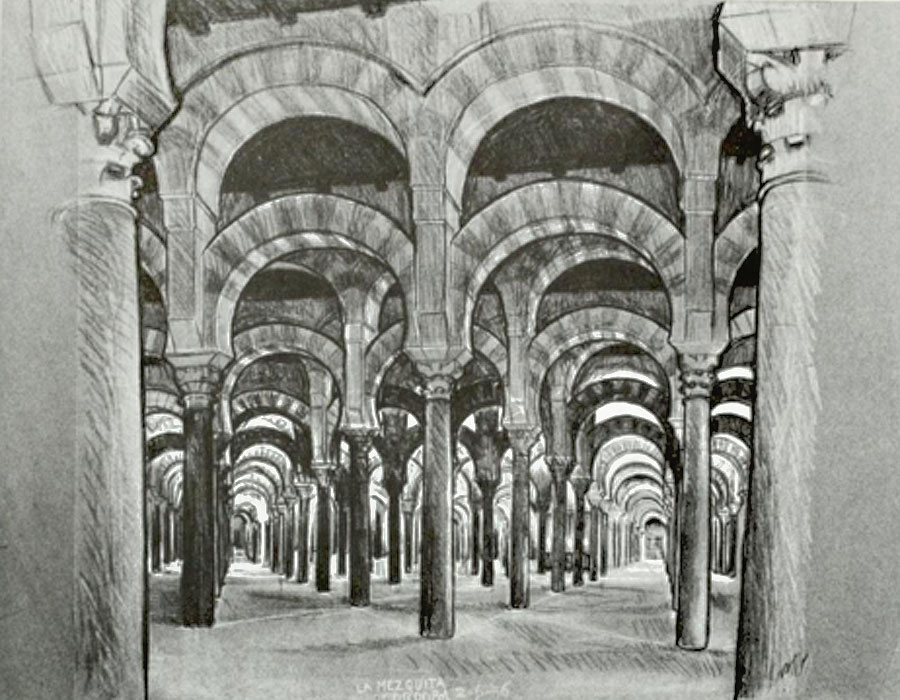
I have to say, I completely understand why he was so inspired by the hypnotic arches of the mosque. But for some reason, I also expected to see more Islamic tiles in/around the mosque. But there were not as many as I expected. Perhaps my expectations were skewed because I visited Al Hambra in Granada last year, which showcased an abundance of Islamic tiles.
Another reason why I expected to see more Islamic tiles was that I was reading the book Islamic Geometric Patterns by Eric Brougs and the very first example/instruction was a pattern that should appear in the great mosque of Cordoba. Unfortunately, I didn’t manage to find this pattern in the mosque.
I did, however, find other patterns that Escher drew (see image below) when I visited the mosque. These patterns appear on the outside of the mosque and are quite interesting to follow.
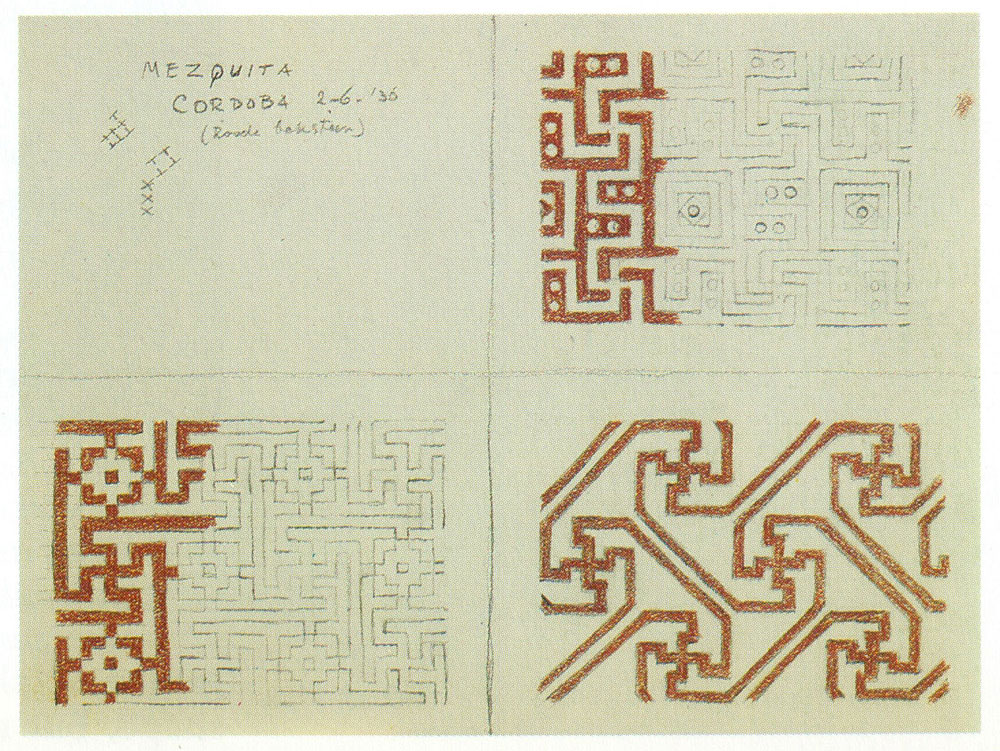
Very cool.
They are in the same style as a very strange patch that I found inside the mosque. The patch in the picture underneath seems quite irregular to me. It’s either not well executed, or there is some strangeness going on that I do not understand. I’ll try to find out what exactly is going on there and I will report back later.
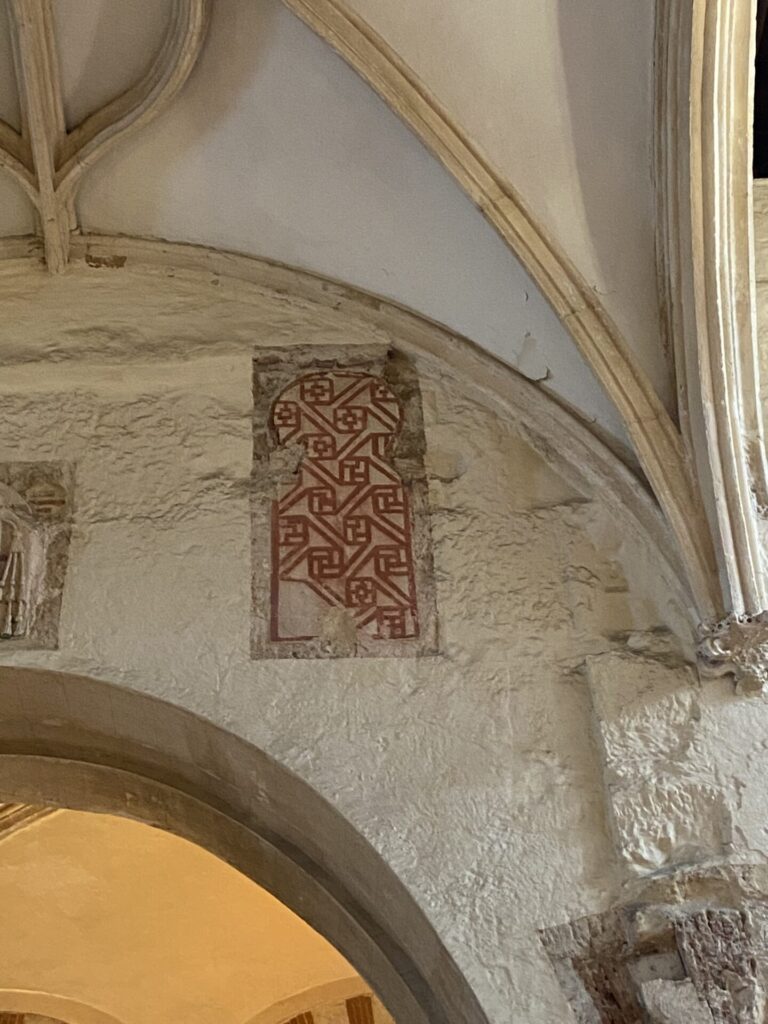
That was it for now. It was a very cool experience to visit this strange building. I recommend going there if you have the chance. Now it is up to me to take this inspiration and create some cool works with it! I’ll update you later on that!